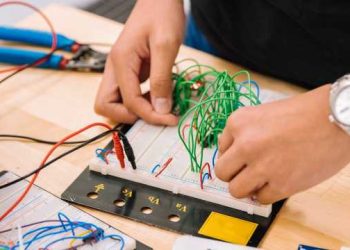Remote Teaching Strategies in E-Learning: Best Practices for Educators
With the recent global shift towards online learning due to the COVID-19 pandemic, educators have had to quickly adapt to remote teaching. While the transition may seem daunting, there are several best practices that can help make e-learning effective and engaging for both teachers and students. In this blog post, we will explore some of these strategies and provide tips on how educators can optimize their online teaching experience.
1. Establish a Supportive Online Learning Environment:
Creating a positive and supportive online learning environment is crucial for student engagement and success. Educators should start by setting clear expectations for behavior and participation. Encourage students to communicate openly and respectfully with each other, just as they would in a physical classroom. Additionally, provide students with a platform where they can easily access and submit assignments, ask questions, and receive feedback. Google Classroom and Microsoft Teams are popular learning management systems that offer these functionalities.
2. Utilize Interactive and Multimedia Tools:
Engaging students in an online setting can be challenging, but there are numerous interactive and multimedia tools available that can help enhance the learning experience. For instance, video conferencing platforms like Zoom or Google Meet can be used for live lectures, virtual discussions, and group activities. Online whiteboards, such as Miro or Google Jamboard, can facilitate collaboration and brainstorming. Furthermore, incorporating multimedia elements like videos, infographics, and interactive quizzes can help create a more dynamic and stimulating learning environment.
3. Embrace Synchronous and Asynchronous Teaching Methods:
Synchronous learning refers to real-time interactions between teachers and students, such as live lectures or discussions. Asynchronous learning, on the other hand, occurs when students engage with course materials at their own pace. It is important to strike a balance between these two methods to accommodate students’ different schedules and learning preferences. Consider recording live sessions for students who cannot attend or providing supplementary resources for asynchronous learning. This flexibility will allow students to access content when it is most convenient for them, promoting better engagement and understanding.
4. Foster Active Learning and Student Collaboration:
Active learning involves students engaging in activities that go beyond passive listening. Encourage students to participate actively by incorporating group activities, discussions, and hands-on exercises into your online teaching. Platforms like Google Docs or Microsoft OneNote enable collaborative work, while breakout rooms in video conferencing software facilitate small group discussions. By promoting student collaboration, educators can create a sense of community and foster critical thinking skills.
5. Provide Timely and Constructive Feedback:
Feedback is a crucial component of effective online teaching. Promptly providing feedback on assignments, quizzes, or discussions can help students understand their strengths and areas for improvement. Additionally, offer constructive criticism and suggestions for further learning. Online platforms like Google Classroom or learning management systems often have built-in grading and feedback features that facilitate this process. Remember to be specific, positive, and encouraging in your feedback to motivate students and reinforce their learning.
6. Consider Accessibility and Inclusive Practices:
In remote teaching, it is crucial to ensure that all students have equal access to education. Consider the needs of students with disabilities or those who may have limited resources. Provide closed captions or transcripts for recorded video lectures to assist students with hearing impairments. Additionally, make learning materials available in multiple formats to accommodate different learning styles. By being mindful of these considerations, educators can create an inclusive learning environment for all students.
7. Continuously Assess and Revise Teaching Methods:
E-learning is an evolving field, and it is important for educators to continuously assess and revise their teaching methods. Solicit feedback from students and reflect on your own experiences to identify areas that can be improved. Stay up to date with the latest online teaching tools and resources, and actively seek professional development opportunities to enhance your skills. By remaining open to adaptation, educators can ensure that their remote teaching strategies are effective and engaging.
Remote teaching in e-learning may present challenges, but with the right strategies and best practices, educators can create a vibrant online learning environment. By establishing supportive online learning environments, utilizing interactive and multimedia tools, embracing different teaching methods, fostering active learning and collaboration, providing timely feedback, considering accessibility, and continuously assessing and revising teaching methods, educators can make remote teaching a rewarding experience for both themselves and their students.













